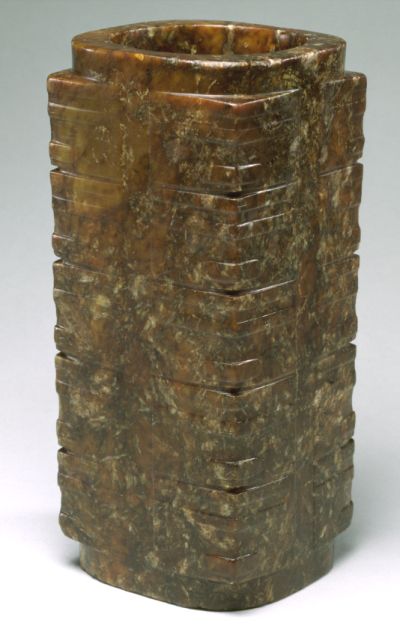
Neolithic sacrificial object. Picture curtesy of Walters Museum of Art.
[Click picture to enlarge]
Cong, essentially tubes with a square cross-section and a circular hole, are among the most impressive yet most enigmatic of all ancient Chinese jade artefacts. Their function and meaning are completely unknown. The earliest cong were produced by the Liangzhu culture (3400-2250 BC). Later examples date mainly from the Shang and Zhou dynasties. Although they were made at many stages of the Neolithic and early historic period, the origin of the cong in the Neolithic cultures of south-east China has only been recognized in the last thirty years.
The cong is one of the principal types of jade artefact of the Liangzhu culture (about 3000-2000 BC) around Lake Tai in Jiangsu province. Spectacular examples have been found at all the major archaeological sites. The main types of cong have a square outer section around a circular inner part, and a circular hole, though jades of a bracelet shape also display the bi disc characteristics of the cong. Proportions vary - a cong may be squat or taller than it is wide.
The principal decoration on cong of the Liangzhu period was the face pattern, which may refer to spirits or deities. The outer faces are sometimes decorated with mask like faces, which may be related to the taotie designs found on later bronze vessels.
On the square-sectioned pieces of this type, any face patterns are placed across the corners, whereas on the bracelet form it appears in square panels. These faces are derived from a combination of a man-like figure and a mysterious beast.
One could speculate if the shape of the cong with its square and circular shape could be interpreted as 'the unity of heaven and earth' where the square represents the earth and a circle represents the heaven.
A